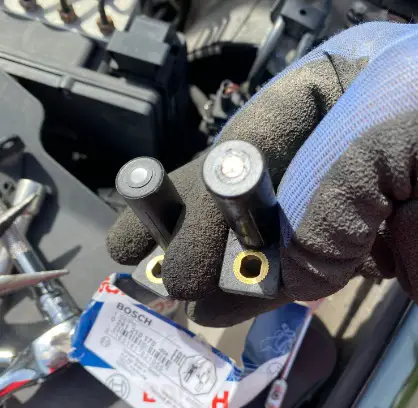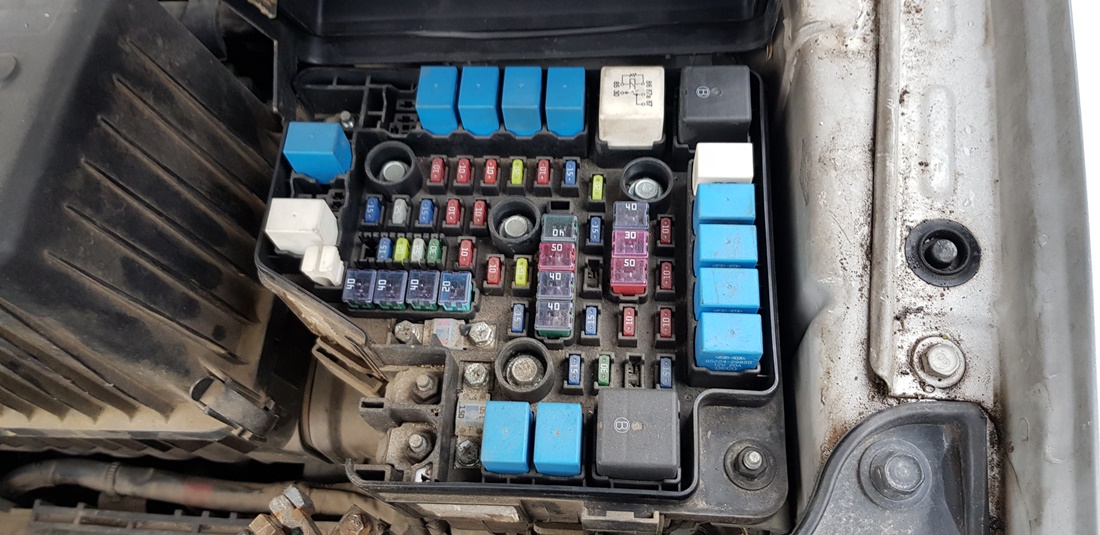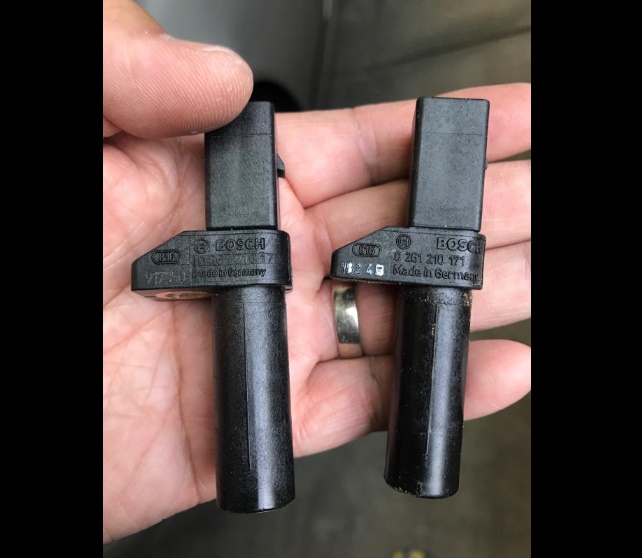The starter motor is an integral component of any vehicle, providing the initial burst of power necessary to start the engine. Without one, a car wouldn’t start.
These motors were designed to last 100,000 miles; however, sometimes they may burn out sooner than expected.
In this article, I’ll outline eight symptoms of a burnout starter motor. By the end, you’ll be able to recognize one.
Key Takeaway
- Symptoms of a burnout starter motor include the engine not turning over, slow cranking, grinding noise when cranking, whirling noise coming from the starter, intermittent issues starting the vehicle, starter staying on after the vehicle is running, smoke from the starter or the starter engages but doesn’t start the vehicle.
- Diagnosing a bad car starter involves identifying specific symptoms such as a clicking noise when turning the key, failure of the engine to turn over, sluggish cranking, and the presence of smoke, which indicate that the starter motor isn’t functioning properly.
- Fixing a burnout starter motor repairing or replacing it which could include resurfacing the commutator and replacing brushes and springs, and then reinstalling it while ensuring the resolution of any underlying issues like a sticking ignition switch or relay that could cause a constant feed to the starter motor.
8 Symptoms Of a Burnout Starter Motor

Symptoms of a burnout starter motor include the engine not turning over, slow cranking, grinding noise when cranking, whirling noise, bad mechanical noises, free spinning when not under load, ignition switch issues, and starter motor running in a mesh.
1. Engine won’t turn over

One of the common symptoms of a burnout starter motor is that your engine won’t start.
Before replacing the starter motor, check to see if your starter fuse and relay have burned out first; these components often go bad before you realize there’s an issue with the motor itself.
When you turn the key in the ignition of your car, you expect it to start without issue. Unfortunately, sometimes you may discover that your vehicle has trouble starting up.
If your engine won’t start, it could be due to a defective starter motor. This component is responsible for turning the engine over when you insert the key into the ignition, so if it’s not functioning properly, your car won’t start.
Troubleshooting a bad starter motor involves checking the battery first; if it’s dead, the motor won’t have enough power to turn over. Next, inspect the electrical connections between the battery and the starter motor for any signs of corrosion or damage.
If the cables are loose, it could be preventing enough power from reaching the starter motor. Furthermore, inspect the starter motor itself for any signs of damage; if damaged, it may need replacement. If you’re still experiencing difficulty starting your engine, take it to a mechanic for further diagnosis and assistance.
2. Slow cranking

A malfunctioning starter motor is often to blame for a vehicle’s slow cranking. This component supplies initial power to start up the engine, and if damaged, can reduce output and cause it to crank slowly or even not start at all. In extreme cases, however, a bad starter may even prevent your car from starting at all!
One way to recognize slow cranking in cars is by the sound of the engine. A slow crank typically sounds labored or strained, and it may take more time for it to turn over. Other signs that your engine might be running slowly include dim headlights or interior lights.
This may indicate a weak battery, which should be replaced. Finally, if your car stalls shortly after starting up, this could also be indicative of slow cranking. In such cases, taking it to an experienced mechanic for further assessment is recommended.
3. Grinding noise when cranking

When you turn the key in your car and hear a grinding noise, it could be due to an issue with the starter motor. This motor is responsible for turning over the engine by engaging the flywheel, and if damaged it can cause the flywheel to bind and create a grinding noise.
The engine’s starter is responsible for spinning the flywheel. This large metal disc is attached to the crankshaft and keeps everything spinning when the engine runs.
The starter is mounted on the engine block and features a small gear that engages with teeth on the flywheel. When engaged, this gear turns the flywheel and gets the engine started. Once running smoothly, however, the starter disengages from its attachment point and stops turning.
To better identify a grinding noise caused by a damaged starter motor, have someone start the vehicle while you stand outside with the hood open. If the starter motor is severely damaged, you’ll be able to hear this in the cabin.
4. A whirling noise coming from the starter

One of the most common starter symptoms is a whining sound. If you turn your ignition key and hear an intermittent whine, chances are your starter motor is beginning to fail. A burnt-out starter motor will produce both whirling noise and a grinding sound as it struggles to turn over the engine.
If your starter is making a whirling noise, it could be because the engine isn’t turning over. This could be due to an issue with either your battery, cables or even the starter itself.
If you suspect that it’s due to a battery problem, check all connections and ensure all cables are securely attached; however if this persists then replacing the battery may be necessary.
If the engine is still not starting, it could be due to a defective starter. In this instance, you’ll need to take your car in for diagnosis and repairs from an experienced mechanic. Though these problems can be frustrating, there are plenty of qualified professionals who can help get you back on the road quickly and safely.
5. Intermittent issues starting the vehicle

Intermittent problems starting the vehicle may be due to a malfunctioning starter. This component provides the initial burst of energy necessary for starting the engine, so without a working starter, your car won’t start.
Signs that your starter may be malfunctioning include hearing clicking noises when you turn the key, taking longer than usual to start, or experiencing random failures. Any one of these symptoms could indicate a malfunctioning starter.
6. Starter stays on after starting the engine

A starter is an electric motor that turns an engine to start it. It consists of a powerful DC motor connected to the battery via a solenoid switch. The solenoid itself is actually just a coil of wire which becomes magnetized when current passes through it.
This magnetic field activates the starter switch, allowing current to flow from the battery to the starter motor. The starter motor then turns over the engine and it begins. When you turn your key back to its “off” position or when your engine begins running and no longer activates the solenoid, deactivate this magnetic field activation switch once again.
If your starter remains on after starting your engine, there could be several possible causes. One possibility is that the solenoid on your starter may not be disengaging properly when running; in this instance, disconnecting it from the battery won’t solve the issue.
Another possibility is a problem with the ignition switch, which may not be fully disengaging the starter circuit. Either way, it’s essential to get this checked out by an experienced mechanic as a stuck starter can cause unnecessary wear on your engine and potentially drain its battery.
7. Smoke coming from the starter

When you start your car engine, it turns over and begins running. The starter is responsible for this action by sending an electrical current to the spark plugs that ignites them and ignites the combustion inside of it, igniting its spark plugs and igniting your car engine.
If you detect smoke coming from your vehicle’s starter, it is critical to have the problem identified and fixed promptly. Smoke coming from the starter can be caused by a variety of issues, such as debris buildup or an ill-functioning electrical connection.
However, it’s also possible that the smoke indicates a more serious issue, such as an electrical short circuit. No matter the cause, having this issue diagnosed by an experienced mechanic is critical to prevent further harm to your vehicle.
8. Starter engages but the engine won’t start

The engine starter is responsible for turning the engine over, which then starts the car engine. If it fails to engage, however, nothing will start. There can be several reasons why a starter may fail to engage: damage or burnout on the actual device that makes it inoperable.
The second reason could be a problem with the battery; it may be dead or not providing enough power to start up the starter. Alternatively, an ignition switch issue could exist as well; if it’s not in the “on” position, no power will reach your starter motor.
Finally, an issue with the engine itself can prevent starter engagement. If it is frozen, no matter how much power is applied to it, no matter how fast you crank it. Therefore, if your starter won’t engage, there could be a problem with either its battery, ignition switch, or engine itself.
How To Diagnose a Bad Starter
Diagnosing a bad car starter involves identifying key symptoms such as clicking noises, engine failing to turn over, sluggish cranking, and the presence of smoke.
Clicking Noise
One of the first signs of a bad car starter is a clicking noise when you turn the key or push the start button. This noise is often a clear indication that the starter relay isn’t properly sending current to the starter motor.
Engine Fails to Turn Over
If your engine fails to turn over when you try to start the car, this could be a sign of a bad starter. In such cases, the starter motor isn’t able to rotate the engine’s flywheel at a sufficient speed to start the combustion process.
Sluggish Cranking
When the engine cranks slowly or seems to struggle during startup, it’s often due to a problem with the starter. This sluggish cranking can indicate that the starter motor isn’t receiving enough power or that it’s failing.
Presence of Smoke
The presence of smoke is another symptom of a failing starter. Smoke can occur when there’s too much power being drawn through the electrical supply to a starter motor that’s failing or is already faulty.
Starter Relay Test
A practical way to diagnose a bad starter is by testing the starter relay. You can do this by locating the starter relay, putting your finger on it, and having someone turn the key. You should hear and feel a distinct “click” when the key is turned.
How To Start a Car With a Bad Starter
Everyone knows the frustration of turning on their car’s ignition and hearing only clicking noises instead of engine roar. If this occurs to you, it could be due to a bad starter. While this can be a frustrating issue, there are a few steps you can take in order to jumpstart your vehicle:
1. Do not force the starter
When you attempt to start your car and discover that nothing is happening, take a step back and assess the situation. A bad starter won’t start an engine; however, keeping trying will only damage it further and drain your battery life in the process.
If you turn on the ignition and only hear a whirling, clicking, or grinding noise but the engine won’t start, that’s likely an indication of a bad starter. Don’t try to start it any longer; move on to step two instead.
2. Locate the starter
The starter is a small motor that turns the engine over and starts your car. It typically sits near the battery, either mounted on the frame or engine itself. If you can’t locate your starter, consult your car’s owner’s manual for further instructions.
A car starter is typically cylindrical in shape and attached to the engine. It features a small hole in the center where the spark plug goes, as well as a handle for cranking it. Furthermore, there’s usually a battery connected to this component which supplies power to it.
3. Hit the starter with a wrench
When dealing with a bad starter, one common solution is to hit it with something blunt. While this may seem like an act of desperation, there’s actually some science behind it; hitting the starter sends an electric current through its system which may be enough to jump-start your engine.
Also, the brushes inside your starter may be stuck and preventing your starter from starting your vehicle. The most important thing here is not to hit the solenoid; only hit the main body about three or four times.
4. Try starting the car again
Once inside the vehicle, try starting it again. Note that you may experience some difficulty at first. Hit the starter a couple of times until it works again; this is only a temporary solution to getting your car started and on its way to the shop.
How To Fix a Burnout Starter Motor
Fixing a burnt-out starter motor involves several steps such as identifying the issue, removing the faulty starter, repairing or replacing it, and reinstalling the new or repaired starter.
Identifying the Issue
The first step in fixing a burnout starter motor is to identify the problem. Common signs of a burnt-out starter include clicking noises, the engine failing to turn over, slow cranking, and smoke. If you notice any of these symptoms, it’s likely that the starter motor is the problem.
Removing the Faulty Starter
Once you’ve identified the starter motor as the issue, you need to remove it from the vehicle. This typically involves disconnecting the battery, removing the bolts holding the starter in place, and then carefully removing the starter itself. Remember to keep track of where each bolt came from to ensure a smooth reinstallation process.
Repairing or Replacing the Starter
After the faulty starter has been removed, you can either repair or replace it. If the starter motor is simply dirty or corroded, cleaning it may solve the problem. However, if the starter is burnt out due to overloading, excessive cranking, or a sticking ignition switch, it will likely need to be replaced.
Reinstalling the Starter
Once you have a new or repaired starter, it’s time to reinstall it. This process is essentially the reverse of the removal process. Make sure to tighten all bolts correctly and reconnect the battery once the starter is securely in place says Mechanics.
FAQs
Q: Can a bad starter motor drain the battery?
A: Yes, a bad starter motor can drain the battery. When the starter motor is faulty, it may draw excessive current from the battery, causing it to drain quickly.
Q: How can I prevent my starter motor from burning out?
A: To help prevent your starter motor from burning out, it is important to perform regular maintenance on your vehicle, including checking the electrical system and making sure the starter motor is properly lubricated.
Q: Can I repair a burnout starter motor?
A: In some cases, a burnout starter motor can be repaired. However, it is often more cost-effective to replace the starter motor with a new one.
Q: How much does it cost to replace a burnout starter motor?
A: The cost of replacing a burnout starter motor can vary depending on the make and model of your vehicle and where you take it for repairs. On average, you can expect to pay between $200 to $500 for parts and labor.
Q: Is it safe to drive with a burnout starter motor?
A: It is generally not safe to drive with a burnout starter motor as it can leave you stranded if the engine fails to start. It is recommended to have the starter motor repaired or replaced as soon as possible.
Q: Can a burnout starter motor cause other problems with my vehicle?
A: A burnout starter motor can potentially cause other electrical issues with your vehicle if left untreated. It is best to have it repaired or replaced to avoid any further complications.
Q: How long does it take to replace a burnout starter motor?
A: The time it takes to replace a burnout starter motor can vary depending on the make and model of your vehicle and the experience of the technician. On average, it can take between 1 to 3 hours to complete the replacement.
Conclusion and final thoughts
In conclusion, recognizing the symptoms of a burnout starter motor is crucial for preventing further damage to your vehicle.
It’s important to listen to warning signs such as strange noises or difficulties starting your car and address them promptly.
Regular maintenance and proper care can also help prolong the life of your starter motor.




